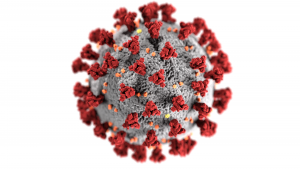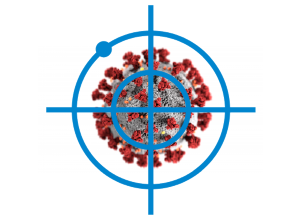 Written by: Gunnveig Grødeland, PhD, University of Oslo and Oslo University Hospital.
Written by: Gunnveig Grødeland, PhD, University of Oslo and Oslo University Hospital.
Effective control of Covid-19 is dependent upon development of protective and safe vaccines. At present, there are many different vaccine formats against SARS-CoV-2 in clinical development, with the more advanced already in clinical Phase III studies. A remaining challenge, however, is that we still do not have a clear understanding of what constitutes the most relevant type of immunity for protection against Covid-19, and what would be the best strategy for induction of such protection.
A serological survey of over 35,000 households in Spain has demonstrated that an overall 5% of the population has antibodies against SARS-CoV-2, with a higher prevalence of 10% around Madrid and lower in coastal areas (1). Spain has been one of the more severely Covid-19 affected countries in Europe. The fairly low incidence of antibodies in the Spanish population therefore implies that we cannot rely on herd immunity to develop naturally from the present pandemic. Further, the prevalence of SARS-CoV-2 specific antibodies in populations from the epicenters of New York and Lombardy has been estimated to be about 20-25% (2,3). It is not yet clear which antigens and epitopes the induced antibodies are directed against, but there are indications that the antibodies may have a limited capacity for neutralization (4).
During the previous SARS-CoV-1 outbreak in 2002/03, it was demonstrated that antibodies induced against immunodominant sites of the Spike protein were not neutralizing (5). It is also known that when neutralizing antibodies are induced they typically bind to the receptor binding domain of Spike, but also that such antibodies could potentially induce conformational changes in Spike due to mimicking of the ACE-2 receptor and as such potentially enhance viral infection (6). Careful design would therefore be needed for utilization of Spike as a vaccine antigen.
While most vaccines presently in development against SARS-CoV-2 aim for induction of antibodies, cellular immunity can also award protection against disease. Interestingly, a large part of the population have T cells that are reactive against different SARS-CoV-2 proteins even in the absence of a SARS-CoV-2 infection. These T cells are mostly CD4+, and likely originated from previous infections with the “common cold” coronaviruses (7,8). However, it is not yet clear to what degree their presence can reduce development of severe Covid-19 disease.
How should we proceed with vaccine development in a situation where the correlate of protection is not clear?
Pandemics may emerge when a novel pathogen has acquired the ability to transmit efficiently from human to human. As is the case for SARS-CoV-2, we should expect many unknowns when a new pandemic erupts. Vaccination remains the best preventive strategy, but how can one efficiently design vaccines when it is not clear what type of immune responses will be more important for protection? The only answer today is to simultaneously develop many different vaccine formats, compare their strengths and weaknesses, and select the best-fit candidate for vaccination of the population. For this to work, it is important that researchers share both promising and negative results for their particular vaccine format. It is my hope that this strategy will secure a vaccine ready to be large-scale deployed against SARS-CoV-2 during 2021.
We can be certain that SARS-CoV-2 will not be the last pandemic challenge facing the world. It is still unclear what will happen during this fall, but alongside taming the present outbreak, we should try to generate knowledge and strategies that may be of use for quenching the next pandemic emergence caused by an unknown pathogen X. This includes both strategies for managing transmission in society, development of treatment strategies that can be used for limiting replication across different viral families, as well as development of vaccine platforms that can be readily adapted for tailored induction of particular types of immunity.
A new era for subunit vaccines?
Interestingly, a majority of the vaccine formats presently in development against SARS-CoV-2 are subunit vaccines, meaning that they contain only selected viral antigens. At present, there are no genetic subunit vaccine licensed for use in humans, but there are a few protein based subunit vaccines available (e.g., Flublok by Sanofi, Recombivax by Merck).
Subunit vaccines have typically been hampered by reduced immunogenicity, necessitating the combined use of an adjuvant or alternative strategies for enhancing vaccine efficacy. However, their safety profiles and ease of production nevertheless makes subunit vaccines ideal for pandemic prevention.
The large amount of research presently going into development and clinical evaluation of different subunit vaccines is unprecedented. Thus, the ongoing SARS-CoV-2 pandemic may turn out to be the breaking point where subunit vaccines establish themselves as the preferred alternative to conventional inactivated or attenuated vaccines.
Subunit vaccines rely on rational selection and design of selected antigens. As such, immune responses can be steered towards antigenic regions more relevant for development of protective immunity. The better we understand human immunology, the better subunit vaccines we can design. For the future, we could be able to assign the relevant correlate of protection by examining shared pathogen traits, and then design vaccines specifically tailored for induction of the corresponding type of immunity. In the meantime, we will likely fare better by aiming a bit more broadly, and develop subunit vaccines that can induce both antibody and T cell responses.
References
1. Pollan, M., B. Perez-Gomez, R. Pastor-Barriuso, J. Oteo, M. A. Hernan, M. Perez-Olmeda, J. L. Sanmartin, A. Fernandez-Garcia, I. Cruz, L. N. Fernandez de, M. Molina, F. Rodriguez-Cabrera, M. Martin, P. Merino-Amador, P. J. Leon, J. F. Munoz-Montalvo, F. Blanco, and R. Yotti. 2020. Prevalence of SARS-CoV-2 in Spain (ENE-COVID): a nationwide, population-based seroepidemiological study. Lancet.
2. Percivalle, E., G. Cambie, I. Cassaniti, E. V. Nepita, R. Maserati, A. Ferrari, M. R. Di, P. Isernia, F. Mojoli, R. Bruno, M. Tirani, D. Cereda, C. Nicora, M. Lombardo, and F. Baldanti. 2020. Prevalence of SARS-CoV-2 specific neutralising antibodies in blood donors from the Lodi Red Zone in Lombardy, Italy, as at 06 April 2020. Euro. Surveill 25.
3. Stadlbauer D, Tan J, Jiang K, Hernandez M.M, Fabre S, Amanat F, Teo C, Arunkumar G, McMahon M, Jhang J, Nowak MD, Simon V, Sordillo EM, Bakel H, and Krammer F. 2020. Seroconversion of a city: Longitudinal monitoring of SARS-CoV-2 seroprevalence 1 in New York City. medRxiv preprint.
4. Robbiani, D. F., C. Gaebler, F. Muecksch, J. C. C. Lorenzi, Z. Wang, A. Cho, M. Agudelo, C. O. Barnes, A. Gazumyan, S. Finkin, T. Hagglof, T. Y. Oliveira, C. Viant, A. Hurley, H. H. Hoffmann, K. G. Millard, R. G. Kost, M. Cipolla, K. Gordon, F. Bianchini, S. T. Chen, V. Ramos, R. Patel, J. Dizon, I. Shimeliovich, P. Mendoza, H. Hartweger, L. Nogueira, M. Pack, J. Horowitz, F. Schmidt, Y. Weisblum, E. Michailidis, A. W. Ashbrook, E. Waltari, J. E. Pak, K. E. Huey-Tubman, N. Koranda, P. R. Hoffman, A. P. West, Jr., C. M. Rice, T. Hatziioannou, P. J. Bjorkman, P. D. Bieniasz, M. Caskey, and M. C. Nussenzweig. 2020. Convergent antibody responses to SARS-CoV-2 in convalescent individuals. Nature.
5. He, Y., Y. Zhou, H. Wu, B. Luo, J. Chen, W. Li, and S. Jiang. 2004. Identification of immunodominant sites on the spike protein of severe acute respiratory syndrome (SARS) coronavirus: implication for developing SARS diagnostics and vaccines. J. Immunol. 173: 4050-4057.
6. Yang, Z. Y., H. C. Werner, W. P. Kong, K. Leung, E. Traggiai, A. Lanzavecchia, and G. J. Nabel. 2005. Evasion of antibody neutralization in emerging severe acute respiratory syndrome coronaviruses. Proc. Natl. Acad. Sci. U. S. A 102: 797-801.
7. Grifoni, A., D. Weiskopf, S. I. Ramirez, J. Mateus, J. M. Dan, C. R. Moderbacher, S. A. Rawlings, A. Sutherland, L. Premkumar, R. S. Jadi, D. Marrama, A. M. de Silva, A. Frazier, A. F. Carlin, J. A. Greenbaum, B. Peters, F. Krammer, D. M. Smith, S. Crotty, and A. Sette. 2020. Targets of T Cell Responses to SARS-CoV-2 Coronavirus in Humans with COVID-19 Disease and Unexposed Individuals. Cell 181: 1489-1501.
8. Le Bert N, Tan TA, Kunasegaran K, Tham CYL, Hafezi M, Chia A, Chng M, Lin M, Tan N, Linster M, Chia WN, Chen MIC, Wang LF, Ooi EE, Lalimuddin S, Tambyah PA, Low JGH, Tan YJ, and Bertoletti A. 2020. Different pattern of pre-existing SARS-COV-2 specific T cell immunity in SARS-recovered and uninfected individuals. bioRxiv preprint.



